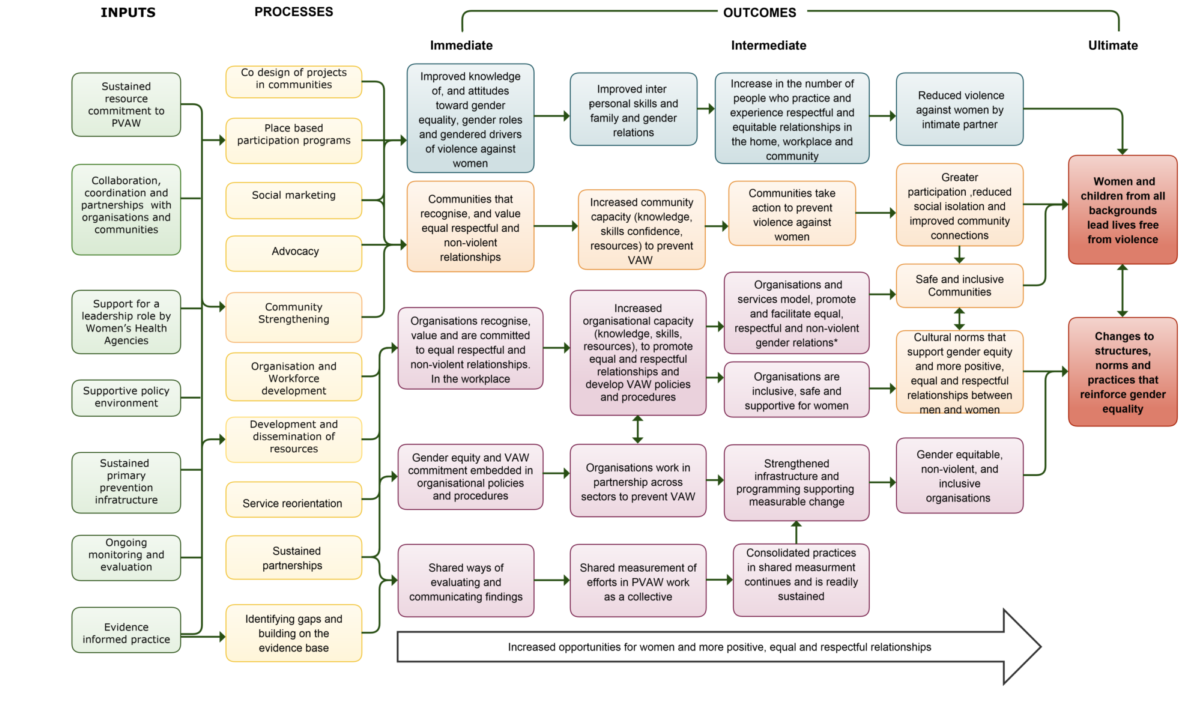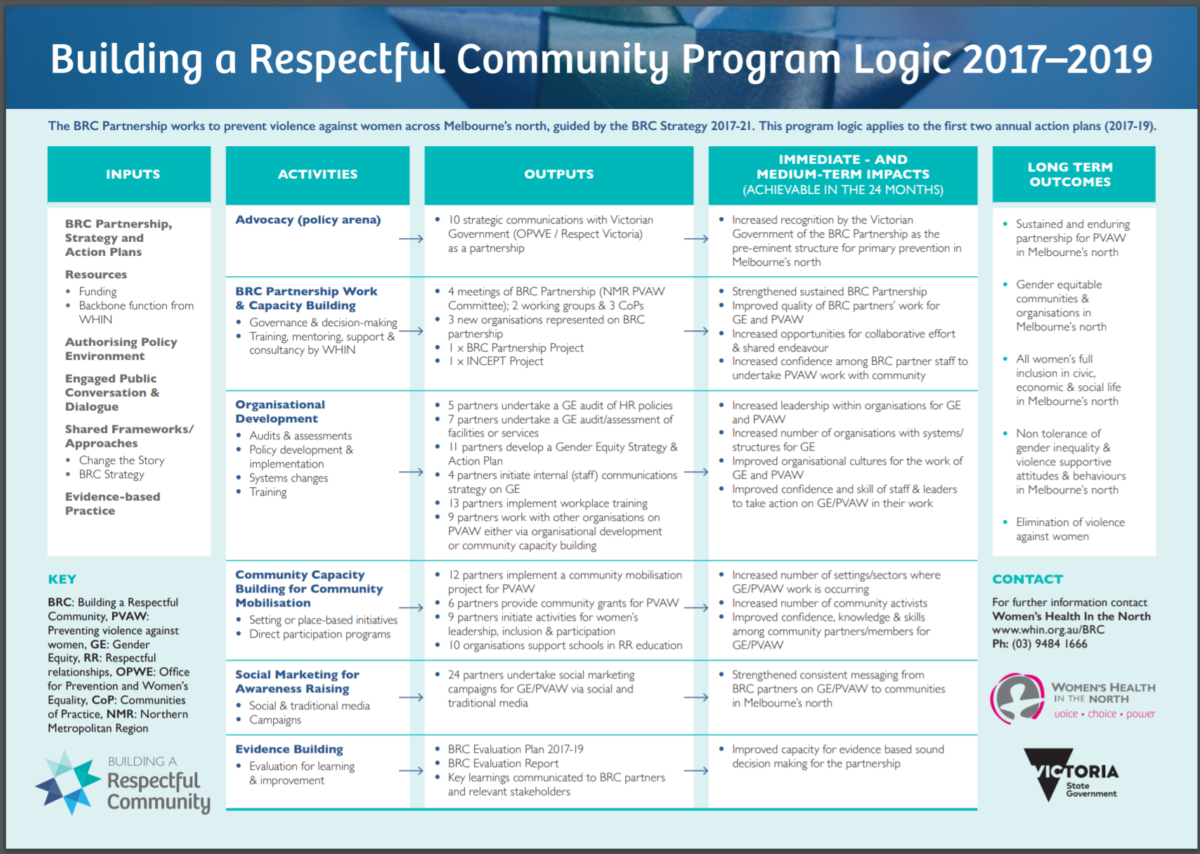Designing a logic model
The logic model
Also referred to as a logical framework, the logic model depicts the inputs, activities, outputs and outcomes of a project, all linked together as if-then relationships (if this occurs then this will happen). Logic models are usually presented in a linear fashion (Vic Health, 2015). Logic models articulate the goals and resources of an initiative and have more of a focus on implementation theory.
A logic model is a detailed graphic representation of how project inputs and activities will lead to outputs and short, medium and long term impacts. They are useful for mapping your journey to your goal. Logic models are grouped into four broad types - pipelines, outcome chains (or outcome hierarchy), realist matrices and narratives (Funnel & Rogers, 2011).
Key tips for developing logic models
-
Use an active voice
-
Aim to keep language simple (as a general guide, no more than 10 words per cell)
-
Start with boxes first and arrange in a cause and effect line(s) before joining with arrows
-
Create a narrative to explain your logic model and articulate key assumptions
-
Establish key principles alongside your logic model. For example: "Equity - everyone should have equal access to education and employment"
Example logic models
This example logic model was developed by INWPCP Prevention Alliance partner organisations in collaboration with Melbourne University. It outlines the work of the partnership at an individual (blue), community (orange) and organisational (purple) level. The longer term outcomes align with Change the Story (Our Watch, 2015), Counting on Change (Our Watch, 2017) and the Vic Health Frameworks for Preventing Violence Against Women (VicHealth, 2009).
You can download a clearer picture here.

Another example is this logic model from the Building a Respectful Community Partnership. You can see a clearer image of this logic model here.

Software solutions to developing logic models
When developing your own logic models, there are a few different practical tools, templates and online software solutions available. These include:
- The Logic Model Builder and Online Guide (Vic Health, 2015) - contains an editable Microsoft Word logic model template
- Microsoft word or PowerPoint provide basic drawing tools to design a logic model - some templates may be useful for logic models or flow diagrams
- Gliffy (https://www.gliffy.com/) - an online software program that provides an easy to use, drag and drop shapes and lines/arrows. Free account is available but limits number of logic models you can develop
- Dylomo (https://dylomo.com/)- free online software for building interactive logic models. Dylomo is really useful to create logic models within a theory of change. You can read more about Dylomo software in this overview at Better Evaluation
- Lucidchart - provides options for online collaboration and 'living' program logic.
Note: that some online software programs are only supported by Google Chrome, Firefox and/or Microsoft Edge and won't work well on Internet Explorer.


